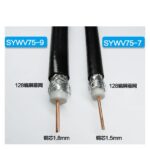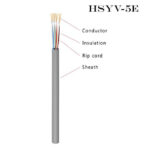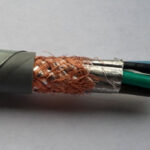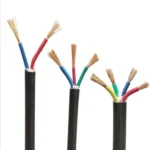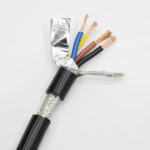SEU cable stands for Service Entrance Unarmored cable. It is a type of electrical wire commonly used to bring power from the electric utility meter to the main service panel in residential buildings. Designed for above-ground installations in dry locations, SEU cable is a cost-effective and code-compliant solution for specific service entrance applications.
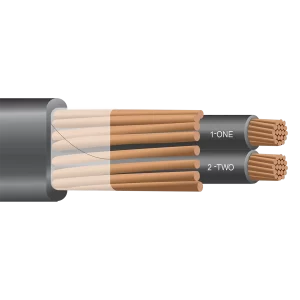
What is SEU Cable
Key Features of SEU Cable
Conductor Material: Typically made of aluminum (though copper versions exist)
Voltage Rating: 600 volts
Temperature Rating: Up to 90°C (194°F) in dry locations
Insulation: Thermoplastic (Type XHHW or THHN)
Jacket: PVC outer jacket for protection
Configuration:
Two insulated conductors (hot wires)
One bare conductor that serves as both neutral and ground
⚠️ Unlike SER cable, SEU has no separate ground wire—the neutral and ground are combined, which limits where it can be used.
SEU vs SER Cable: What’s the Difference?
While both cables fall under the SE (Service Entrance) category, their configurations and uses are different:
| Feature | SEU Cable | SER Cable |
|---|---|---|
| Ground & Neutral | Combined | Separate |
| Number of Conductors | 2 Insulated + 1 Bare | 3 or 4 Insulated + 1 Bare |
| Use Location | Before the main service disconnect | After the main service disconnect |
| Typical Application | Meter to main panel | Subpanels, feeders, large appliances |
| Flexibility | Less versatile | More flexible in terms of use |
Where is SEU Cable Used?
SEU cable is ideal for a narrow set of applications, mostly in residential settings:
✅ Common Applications
Overhead service entrance cable from utility meter to main breaker panel
Panel feeders (in some code-allowed situations)
Temporary power during construction (dry conditions only)
❌ Not Recommended For
Subpanel wiring (due to shared ground/neutral)
Outdoor wet locations
Commercial or industrial feeders requiring isolated ground conductors
Advantages of SEU Cable
Cost-Effective: Fewer conductors mean lower material costs
Lightweight: Easier to handle and install
Code-Compliant: Approved by NEC for specific applications
Space-Saving: Flat cable shape can be easier to route in tight spaces
Installation Considerations
Dry Locations Only: Not suitable for wet or direct burial
Support and Securing: Must be properly clamped and supported per code
Neutral/Ground Configuration: Should only be used in applications where neutral and ground are permitted to be shared (usually before the main service disconnect)
Use by Qualified Professionals: Installation should be performed by licensed electricians to ensure safety and code compliance
SEU Cable and the NEC Code
SEU cable falls under Article 338 of the National Electrical Code (NEC), which governs Service-Entrance cable installations. It is crucial to:
Follow local amendments to the NEC
Understand bonding and grounding requirements
Verify that SEU is approved for use by the Authority Having Jurisdiction (AHJ)
Summary: Is SEU Cable Right for Your Project?
SEU cable is an effective choice for delivering power from the utility meter to the main panel in residential buildings. It is best used in dry, above-ground applications where shared ground/neutral conductors are acceptable.
However, it has limitations and should not be used in situations that require separate grounding conductors—this is where SER cable becomes the better option.
💡 When in doubt, consult with a licensed electrician or check with your local electrical code authority to determine the right cable type for your project.

